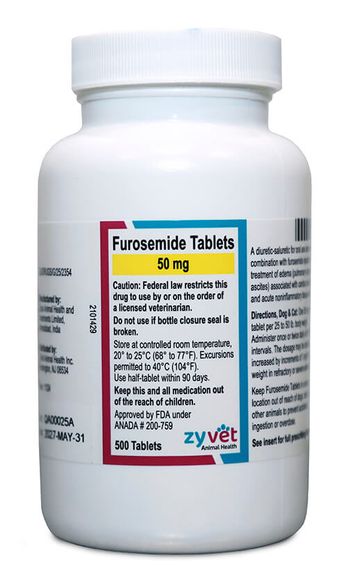
Journal Scan: Physiological heart murmurs are more common in our veterinary patients than we may think
Murmurs may not only be limited to specific breeds or growing dogs.
Why they did it
Researchers sought to determine the prevalence of physiological heart murmurs (i.e. a murmur in the absence of a structural abnormality of the heart and great vessels) in young, apparently healthy dogs between the ages of 1 and 5 years and of various breeds.
What they did
Between November 2012 and July 2013, researchers enrolled 95 dogs (48 males and 47 females) with heart murmurs that were identified at the time of routine vaccination. All dogs were in apparent good health, were between 1 and 5 years of age (median age 32 months) and represented 30 breeds.
Cardiac auscultation for each dog was performed by at least three examiners-a board-certified internist, a cardiology resident and an internal medicine resident-all of whom were blinded to the others' findings. When noted, heart murmurs were graded as follows:
- Grade I/VI: Faint murmur; only heard with particular effort
- Grade II/VI: Faint murmur; clearly heard by an experienced examiner
- Grade III/VI: Moderately loud; easily auscultated
- Grade IV/VI: Loud murmur with no palpable thrill
- Grade V/VI: Very loud murmur with thrill; inaudible after removing stethoscope from chest wall
- Grade VI/VI:Very loud murmur; thrill still audible after removing stethoscope from chest wall
Dogs with arrhythmias or any clinical or biologic signs of disease were excluded. Indirect blood pressure evaluation was performed in all dogs, and the average of five consistent measurements was recorded. A patient with a systolic pressure > 180 mm Hg was considered hypertensive. A urinalysis, complete blood count, and serum chemistry profile were also performed in all dogs.
All dogs underwent a standard, unsedated, echocardiographic examination, and the ultrasonographer was blinded to the auscultation findings.
What they found
The researchers identified murmurs in 22 of 95 dogs (23%), and all were systolic, detected primarily over the left heart base and ranged between Grade I to III/VI. Ten of these murmurs were identified only by the board-certified internist and were Grade I to II/VI. All three investigators reported the same findings in 69% of dogs, and interobserver agreement was found to be fair to moderate; “[h]owever, the influence of the investigator on the detection of heart murmurs did not reach statistical significance (P = 0.44).”
No significant difference in sex, age, body weight or breed was present between dogs with murmurs and those without.
Eleven of the 22 dogs with a murmur had echocardiographic abnormalities including mild mitral regurgitation (n = 9), subaortic stenosis (n= 2) and pulmonic stenosis (n= 1). Given the lack of consensus on what is considered abnormal with respect to peak aortic flow velocity and tricuspid regurgitant flow velocity, the authors used both “strict” and “flexible” criteria to determine a diagnosis of subaortic stenosis or pulmonary arterial hypertension. In the absence of other echocardiographic findings and using the strict criteria, mild subaortic stenosis was diagnosed in four of the 22 dogs, and pulmonary arterial hypertension was diagnosed in one dog. All of these dogs, however, were considered to have physiological heart murmurs if the flexible criteria were applied. This resulted in a prevalence of physiological heart murmurs in this population between 6% and 12% depending on the echocardiographic criteria used, with 27% to 50% of the 22 murmurs considered physiological.
Take-home message
Physiological heart murmurs may not be limited to specific breeds of dogs or growing dogs but may also be found in young, healthy dogs. But a lack of consistent criteria for the diagnosis of subaortic stenosis and pulmonary arterial hypertension makes accurate assessment of the prevalence of physiological heart murmurs difficult.
Drut A, Ribas T, Floch F, et al. Prevalence of physiological heart murmurs in a population of 95 healthy young dogs. J Small Anim Pract. 2015;56(2):112-118.
Link to abstract:
Newsletter
From exam room tips to practice management insights, get trusted veterinary news delivered straight to your inbox—subscribe to dvm360.






